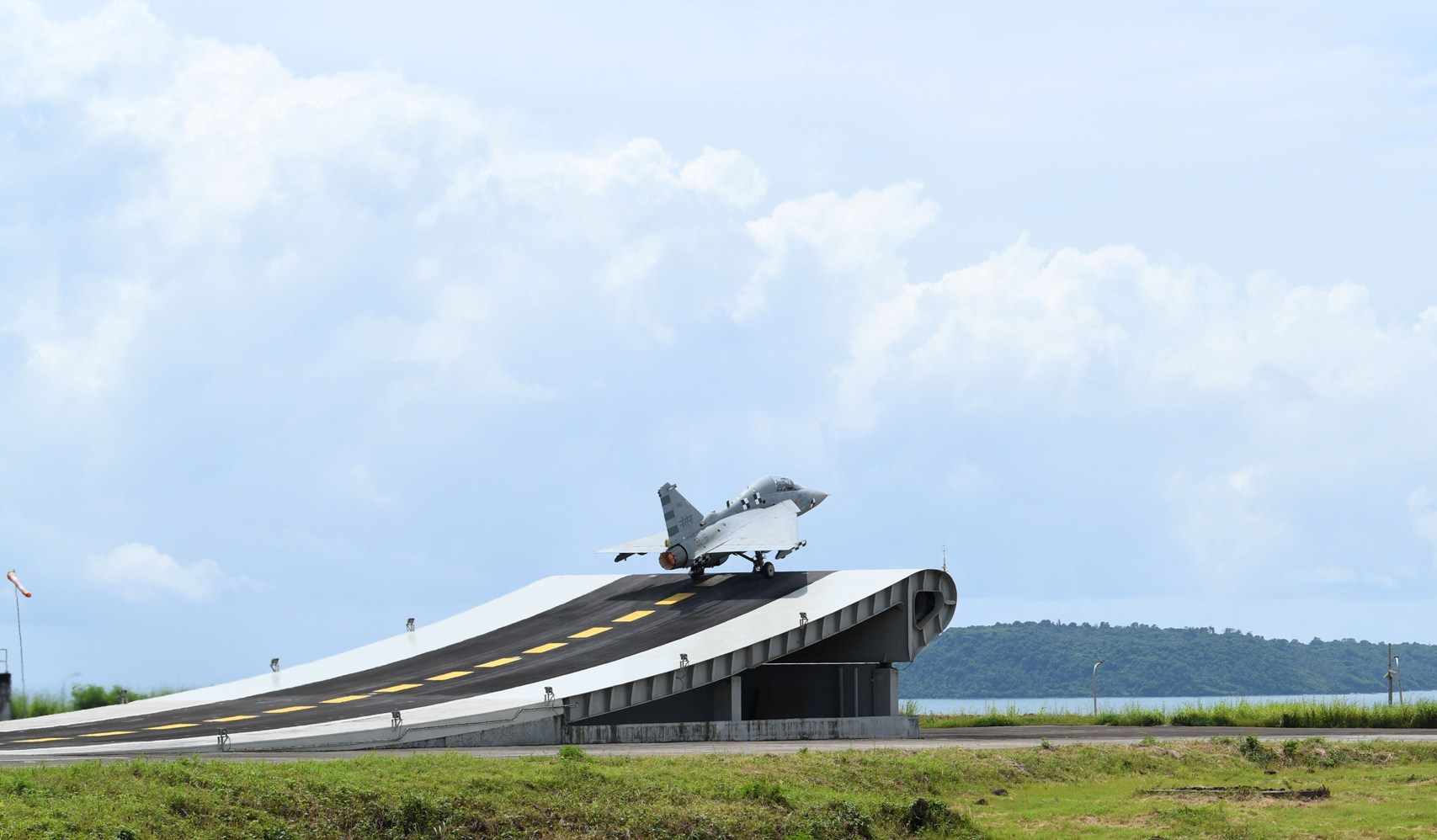
It’s been an excellent month for the LCA Navy, India’s first fighter jet for carrier deck operations. Just over two weeks after its debut tailhook arrested recovery in Goa, a prototype of the aircraft completed the full sequence of launch and arrested recovery in a single sortie — a major milestone in flight test, and one that brings significant validations to move the program ahead. The flight took place yesterday.
In a statement, the Defence Ministry said, “On 29 September, 2019, LCA Naval Prototype-2 launched off the ski jump at 1621 hours and then subsequently “trapped” at 1631 hrs on the arresting gear site (both locations situated at Shore Based Test Facility INS Hansa, Goa). While both these activities had been achieved individually earlier, this was the first occasion when the complete cycle of launch and recovery necessary for aircraft carrier operations was accomplished in a single sortie.”
It added, “A seminal achievement was accomplished in the quest for technologies related to operation of indigenous fighter aircraft from aircraft carriers.” The LCA took off from the shore-based ski jump for the first time in 2014.
The LCA Navy has had a troubled journey through flight test, but in December last year, the Indian Navy confirmed that it was backing the platform as an asset for its current and next aircraft carrier. This month’s big steps forward come as a major psychological confidence-building boost to a program that has always been on the fringes of being shelved.
The Aeronautical Development Agency (ADA), which develops the LCA Navy, said, “Being a pioneering technology acquisition and demonstration program for the unique Short Take-Off but Arrested Recovery (STOBAR) concept of aircraft operations, the LCA (Navy) team has had to conceptualise and experiment with complex software modes from a clean slate. All this had to be done while tentatively exploring and incrementally expanding the structural capabilities of the aircraft to withstand the brutal requirements of carrier operations. The exploratory nature of this stage of the programme necessitates experimentation with multiple software options and hardware configurations. These include multiple configurations of aerodynamic surfaces, different flight control strategies, avionics tools and display symbols to ease the piloting task, multiple iterations to the “mechanicals” (dampers/structural members/contact points) etc. Comprehensive and seamless integration of all these experimental variants simultaneously into a single platform is therefore not possible till all options have been evaluated and the preferred configuration has been decided. The events on September 29, 2019, therefore, demonstrate the completion of the basic exploration phase of the programme and transition to refinement and improvement iterations.”
Theoretically, the LCA Navy could find place on the Indian Navy’s current aircraft carrier, the INS Vikramaditya and its under-construction indigenous aircraft carrier, the new INS Vikrant, both being STOBAR vessels. It’s use as a carrier-based fighter beyond that remains unclear as India’s second proposed aircraft carrier, it has been decided, will be a flat-top vessel with a CATOBAR/EMALS configuration. The Indian Navy is in the global market for 57 carrier-borne fighter jets, ostensibly to populate that latter deck.
Livefist’s Shiv Aroor did a sortie in an IAF-configured LCA Tejas in February this year. Read his report here.

This is indeed a phenomenal achievement. But given the fact that we are almost already in 2020, my humble view is that it does not make sense to have an LCA Naval version at this point. This can be an excellent test-bed for testing new technologies as and when they come, but getting N-LCA would not be future-proofing our navy.
Instead, this technology needs to be used for AMCA and Indian Navy needs to be roped into the AMCA program from day one. IAF is already on board.
India will tremendously benefit from fleet commonality.in terms of operating cost and training costs. Although there will be many differences and naval aircraft would be more challenging, the commonality would allow us to ensure a more coordinated combat training program for both IAF and Navy pilots.
Our objective should be to limit the number of aircraft types in our fleet to a maximum of three types, going forward. This is the exact advantage the US, China and Russia have with their indigenous industry. They are future proof.
US: F-35A & F-22s for USAF, F/A-18 & F-35C for Navy.
Russia: Su-35 & SU-57 for VVS, Su-33 & MiG-29K for Navy
China: J-10C, Su-35BM, J-20 for PLAAF, J-15 and J-31 for Navy
This is what India needs to achieve -> maximum fleet commonality and self-reliance.
Currently, our fleet is a zoo:
IAF: Su-30MKI, Mirage-2000, MiG-29UPG, Jaguar DARIN III, MiG-21 Bison, HAL Tejas. Rafale C.
Indian Navy: MiG-29K, with no consideration for AMCA (still looking for F/A-18 SH or Rafale M).
This is precisely what we need to avoid.